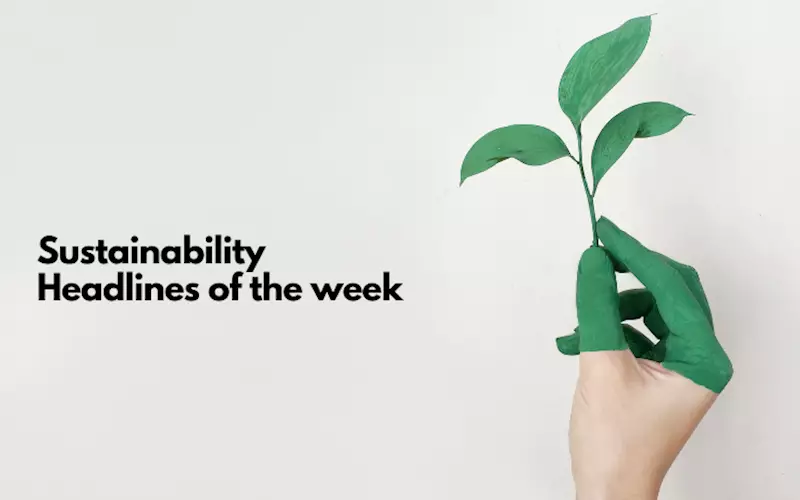USD 2,483.0-bn waste management market; data against single-use tableware
WhatPackaging?’s weekly updates on news stories gearing toward a sustainable future.
09 Oct 2021 | By WhatPackaging? Team
Waste management market expected to reach USD 2,483.0-billion by 2030
According to a recent report published by Allied Market Research, titled, ‘Waste management market by type and service: global opportunity analysis and industry forecast, 2021–2030,’ the global waste management market size was valued at USD 1,612.0-billion in 2020, and is expected to reach USD 2,483.0-billion by 2030, registering a CAGR of 3.4% from 2021 to 2030.
In 2020, Asia-Pacific region dominated the global waste management market, in terms of revenue, accounting for about 58.0% share of the global waste management industry, followed by Europe and LAMEA. During lockdown, owing to coronavirus, the waste production mainly increased from residential areas compared to industrial and commercial centers, as industries and offices were partially or completely shut down so very less industrial and commercial waste was generated.
Is single-use tableware harmful to the environment?
The results of a full life cycle assessment (LCA) commissioned by the European Paper Packaging Alliance (EPPA) and carried out by independent consultant Ramboll, comprehensively challenge the common perception that reusable tableware has lower environmental impacts than single-use systems. The study reconfirms significant benefits for single-use tableware compared to plastic or traditional alternatives (ceramics, glass and metal). In fact, compared to paper-based single-use systems, as part of the annual operation of a typical fast-food restaurant, reusable systems generate 2.8 times more CO2-equivalent emissions; consume 3.4 times more freshwater; produce 2.2 times more fine particulate matter; increase fossil and metal resource depletion by 3.4 times, and increase terrestrial acidification by 1.7 times than the paper-based single-use system. If the studied multi-use system was introduced across Europe, its environmental impact would be equivalent to adding 1 million extra petrol cars each year to Europe’s roads and would equal the freshwater needs of a city of 750,000 people. Eric Le Lay, President of EPPA, said, “Despite common misconceptions, scientific data gives clear evidence that reusables carry significant environmental costs. There is no doubt that single-use food packaging is a better option for the environment, public health, and the achievement of the EU Green Deal goals.”
Mouse from Microsoft made from 20% recycled ocean plastic waste
Microsoft has unveiled a new PC mouse that has been made using recycled ocean plastic waste, to contribute to the world’s battle against plastic waste accumulation. The shell of the mouse has been made with 20% recycled ocean plastic, which is made from plastic waste collected and processed into resin pellets. The pellets are then added to other materials to form a strong, durable shell. Using 100% recyclable plastic didn’t make the mouse as reliable and strong as needed thus, they created a resin blend fusing PET and polycarbonate plastic. The initial goal was to use 10% recycled ocean plastic. However, post trials, the exterior of the mouse could easily be manufactured with 20% recycled plastic by weight. Apart from being environmentally friendly, the mouse also gets three customisable buttons and support for Bluetooth 4.0, with a range of up to 33 feet. Additionally, the mouse supports Microsoft’s proprietary SwiftPair to connect it instantly with the PC.
Plastic waste may soon be turned back to natural resource by recycling: Study
Cornell University researchers conducted new research recently with the aim to ease the process of chemical recycling, which is an emerging industry that could turn waste products back into natural resources by physically breaking plastic down into the smaller molecules it was produced from originally. A new paper details a framework incorporating several mathematical models and methodologies that factor everything from chemical recycling equipment, processes and energy sources, to environmental effects and the market for end products. The framework is the first comprehensive analysis of its kind that quantifies the life-cycle environmental impacts of plastic waste chemical recycling, such as climate change and human toxicity. The paper highlights the benefits of consequential life-cycle optimisation when compared with more traditional analytical tools. In one scenario, to maximise economic outcomes while minimising environmental impacts, life-cycle optimisation produced a more than 14% decrease in greenhouse gas emissions and a more than 60% reduction of photochemical air pollution when compared with the attributional life-cycle assessment approach typically used in environmental assessment studies.











 See All
See All